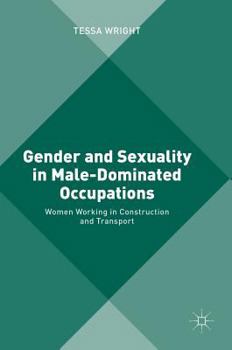Gender and Sexuality in Male-Dominated Occupations: Women Working in Construction and Transport
1 Introduction.- 1.1 The policy context for addressing gender inequality at work.- 1.2 Progress on LGBT rights.- 1.3 The research.- 1.4 Outline of the book.- 2 Understanding gender, sexuality and occupation in male-dominated work.- 2.1 Occupational gender segregation.- 2.1.1 The effects of occupational gender segregation.- 2.1.2 Theories of occupational gender segregation.- 2.2 Women in non-traditional work.- 2.2.1 'One of the boys'.- 2.2.2 Sexuality and embodiment.- 2.2.3 Where are the lesbians?.- 2.3 LGBT experience at work.- 2.3.1 Disclosure of minority sexuality.- 2.3.2 Class and sexuality at work.- 2.3.3 The fluidity of sexual identities.- 2.4 Theories of sexuality.- 2.5 Intersectionality.- 2.6 Conclusion.- 3 Gender segregation in the construction and transport sectors.- 3.1 Women's participation in construction and transport work.- 3.1.1 Women in UK construction and transport.- 3.1.2 International comparisons.- 3.2 Education, training and career choice.- 3.3 Working in construction and transport occupations.- 3.3.1 Working in construction.- 3.3.2 Working in transport.- 3.3.3 Work patterns and hours.- 3.4 Conclusion.- 4 Occupational choice, gender and sexual identity.- 4.1 Choosing non-traditional occupations.- 4.1.1 Occupational trajectories.- 4.1.2 Choice and material realities.- 4.1.3 Work choice and identity.- 4.2 Identities at work.- 4.2.1 Gendered bodies at work.- 4.2.2 Minority sexual identity at work.- 4.2.3 Empowerment, work and gender identity.- 4.3 Conclusion.- 5 Workplace interactions in male-dominated organisations.- 5.1 (Hetero)sexualised interactions.- 5.2 Minority sexuality in the workplace: reducing sexual tension?.- 5.3 Sexual and homophobic harassment.- 5.3.1 Heterosexual women's experience.- 5.3.2 Lesbians' experience.- 5.4 Managing men.- 5.5 Supportive workplace relations.- 5.6 Conclusion.- 6 Support and solidarity: networks and trade unions.- 6.1 Relations with female colleagues.- 6.2 Industry and professional networks for women.- 6.3 Staff networks.- 6.4 Trade unions.- 6.4.1 Union membership.- 6.4.2 Trade unions as sources of support.- 6.4.3 Attitudes towards women's and LGBT separate organising.- 6.4.4 Challenging inequality within unions.- 6.5 Conclusion.- 7 Managing working hours and domestic life.- 7.1 Gender, sexuality and the division of labour.- 7.2 Working hours and flexibility.- 7.3 Negotiating work and domestic circumstances.- 7.4 The significance of earnings.- 7.5 An alternative division of labour?.- 7.6 Conclusion.- 8 Effective interventions for change.- 8.1 Attracting and recruiting women into non-traditional occupations.- 8.2 Retaining women in non-traditional work.- 8.2.1 Work patterns and flexible working.- 8.2.2 Support.- 8.3 Setting employment equality objectives.- 8.4 The role of the law.- 8.4.1 Great Britain.- 8.4.2 South Africa.- 8.4.3 The United States.- 8.5 Conclusion.- 9 Conclusions.- 9.1 The value of an intersectional approach.- 9.1.1 Identities and occupational choice.- 9.1.2 Interactions at work.- 9.1.3 Use of support and networks.- 9.1.4 Managing work and home.- 9.2 The challenges of an intersectional approach.- 9.3 Prospects for the future.- Appendix: Table of women worker interviewees.- Bibliography





